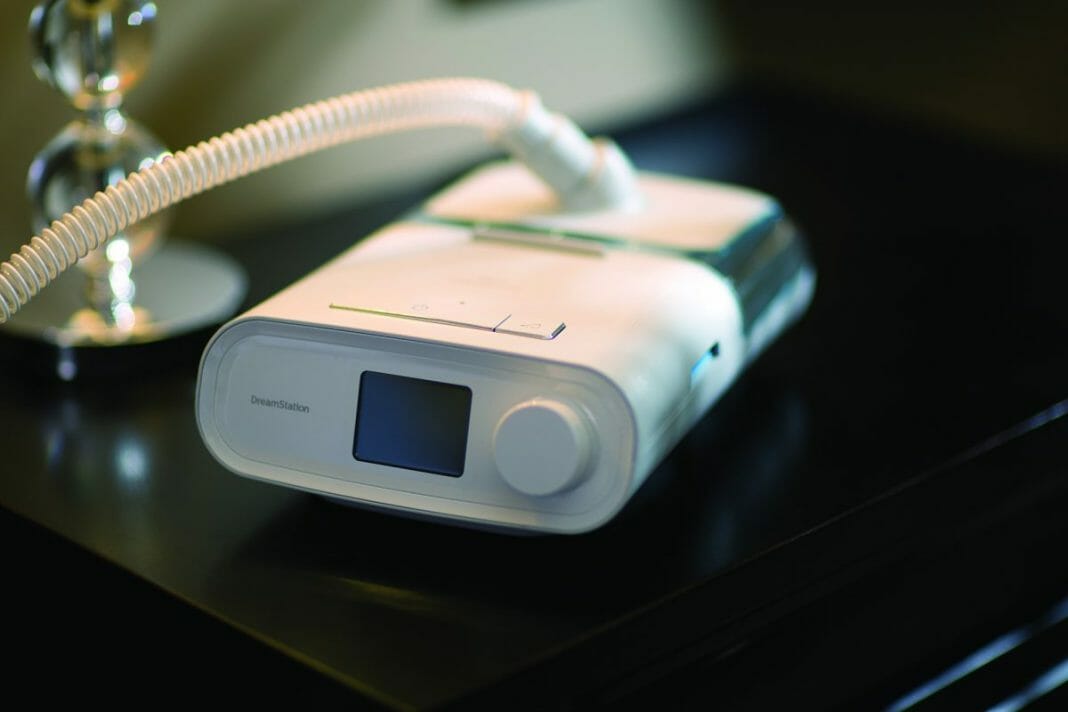On June 14, 2021, Royal Philips’ (NYSE: PHG; AEX: PHIA) subsidiary Philips Respironics, initiated a voluntary recall notification/field safety notice* to address potential health risks related to the polyester-based polyurethane (PE-PUR) sound abatement foam in specific CPAP, BiPAP and mechanical ventilator devices.
At the time the recall notification/field safety notice* was issued, Philips Respironics relied on an initial, limited data set and toxicological risk assessment, and assumed a worst-case scenario for the possible health risks out of an abundance of caution. Since then, together with five certified, independent testing laboratories in the US and Europe, as well as other qualified third-party experts, Philips Respironics has been conducting a comprehensive test and research program on the PE-PUR foam to better assess and scope the potential patient health risks related to possible emission of particulates from degraded foam and volatile organic compounds (VOCs).
This update is intended to provide healthcare providers, patients, and other stakeholders with updated information on the testing results to date. Philips will continue to provide regular updates as new test results and assessments become available, as not all tests have been completed to date.
Testing methods
- Visual assessment of the foam in returned/used devices to assess the prevalence of visible foam degradation.
- VOC testing to identify and quantify organic compounds that may be inhaled during device use.
- Particulate Matter (PM) testing to determine concentrations of respirable particulates, i.e., particulates up to 10 micrometers in diameter, as it relates to inhalation risks and established health thresholds.
- Additional physical, chemical and biological testing of the PE-PUR foam related to patient risks if patients were in contact with foam material.
First-generation DreamStation devices (68% of registered affected devices globally)
- Prevalence of visible foam degradation (US and CA): 164 of 36,341 (0.5%) devices with self-reported no ozone use showed significant visible foam degradation.
- Impact of repeated ozone cleaning: Devices with self-reported ozone use were 14x more likely to have significant visible foam degradation than those with self-reported no ozone use: 777 of 11,309 devices (7%) showed significant visible foam degradation.
- Assessment of a sample of devices linked to reported alleged foam degradation complaints: 422 devices of the inspected 60,847 returned/used devices are linked to a reported foam degradation complaint. However, only 18 out of these 422 devices (4%) actually showed visible foam degradation.
A visual assessment of the foam was also performed on a sample of 1,360 returned/used first-generation DreamStation devices from various countries in Europe and on a sample of 931 returned/used devices from Japan.
- Prevalence of visible foam degradation (EU and JPN): None of the assessed devices from Europe or Japan showed significant visible degradation.
- As previously provided in an update on December 23, 2021, VOC emissions are below established limits based on ISO 18562-3 testing and evaluation of new, lab-aged, and used devices. Exposure to the level of VOCs identified to date for the first-generation DreamStation devices is not anticipated to result in long-term health consequences for patients.
- New devices and used devices (including used devices with visible foam degradation) were tested and were all found to be compliant with ISO 18562-2 allowable limits for PM emissions.
- Tested PM emissions of used devices with degradation were not statistically different than PM emissions without degradation, suggesting that degradation did not contribute to appreciable elevated levels of respirable particles in the devices tested.
- The used devices that were tested for PM emissions, were also evaluated for cleanliness based on a visual inspection of the exterior of the device, i.e., the presence of environmental materials on the external surface of the device, such as the inlet filter location. For these devices, average particulate matter counts in devices classified as ‘dirty’ were significantly greater than those classified as ‘clean’.
To support the assessment of potential genotoxicity, cytotoxicity, and irritation risks of lab-aged foam, chemical characterization of lab-aged foam, as well as experiments to assess the amount of foam that can potentially contact the patient are being conducted, as lab-aged foam did not pass Ames (genotoxicity), cytotoxicity and skin irritation bioassay testing. Further, complementing the lab-aged foam assessment, a chemical characterization of returned/used degraded foam is also being conducted to better elucidate risks under field conditions. Per ISO 10993, the bioassay results cannot stand alone and, therefore, a positive Ames, cytotoxicity, or skin irritation result triggers a required follow-up evaluation including identification of potential confounding factors, and a weight of evidence assessment to determine a confirmed conclusion on potential risks for patients under expected usage of the device.
Other devices under the recall notification/field safety notice
New DreamStation Go and SystemOne devices passed VOC and PM testing based on standards available prior to ISO 18562 i.e., Indoor Air Quality Evaluation (as previously disclosed in the April 25, 2022, update). Further ISO 18562 VOC and PM testing is ongoing. The results of ISO 10993 biocompatibility testing of degraded PE-PUR foam for the first-generation DreamStation devices, which is ongoing, will also apply to DreamStation Go and SystemOne devices.
Further devices include Trilogy 100/200 (3% of the registered devices) and OmniLab/A-Series BiPAP (2% of the registered devices). New Trilogy 100/200 passed VOC and PM testing. New OmniLab devices passed VOC and PM testing based on standards available prior to ISO 18562 i.e., Indoor Air Quality Evaluation (as previously disclosed in the April 25, 2022, update). New and used OmniLab devices passed VOC testing based on ISO 18562. Further testing is ongoing.
